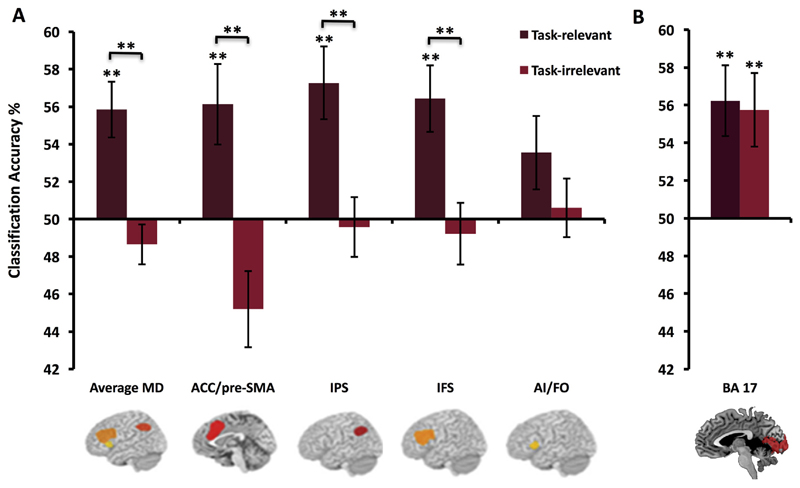Fig. 3.
Decoding in MD network (A) and visual cortices (B). Coding of task-relevant and irrelevant stimulus distinctions in MD regions (A) and BA 17 (B). Error bars indicate standard error. Significance markings for individual bars indicate whether coding was significantly greater that chance in each condition separately (one-sample t test against chance, 50%), significance marking between bars indicate where coding was significantly greater for relevant compared to irrelevant distinctions (main effect of relevancy/paired t-test). **p < .01, alpha for individual MD regions corrected for four comparisons using Bonferroni correction (alpha level = .0125). The MD regions coded task-relevant feature distinctions more strongly than the task-irrelevant distinctions. Coding across average MD = 55.8%, p < .001. Relevant stimulus distinctions were coded in 3 MD ROIs; ACC/pre-SMA, MA 56.1%, p < .001; IPS, MA 57.3%, p < .001; IFS, MA 56.4%, p < .001, with a trend in AI/FO that did not reach our Bonferroni corrected significance level (MA 53.6%, p = .04). There was no coding of irrelevant feature information in any of the MD regions. An ANOVA on BA 17 classification results showed no significant main effects or interactions indicating that coding in this region was not modulated by behavioural relevance.

